Complete Bali Itinerary (5, 7, 10 Days)
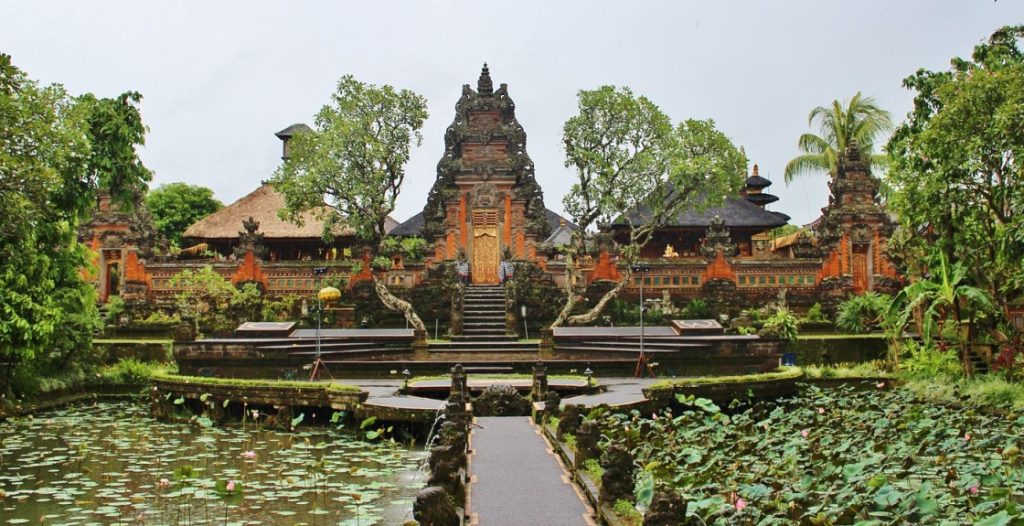
Bali is one of those places that never disappoints. Whether you are interested in beautiful beaches, jungle treks, ancient temples, or candlelit dinners on the beach, Bali has it all. However, the problem lies in the fact that with so many things to do, how do you plan your days without missing anything? That is where this Bali travel itinerary guide will help you! Whether you have 5 days, 7 days, or 10 days, we can break it down – so you know what to do, when to do it, and how to get the best out of Bali. And to top it off, with The Tarzan Way, an AI-based Bali travel planner – you will not only get a generic plan, but you will also get an itinerary created specifically to you and your interests. Think of it as a Bali trip planner, but without the stress. Why You Need a Bali Travel Itinerary Bali may seem small on the map, however, once you start your explorations you will quickly find there is far too much to see in just a few days. A well-planned Bali travel guide can help you to enjoy all that beautiful beaches, culture, and adventure have to offer, without spending more time in traffic than enjoying the island itself. If you are looking for a Bali travel guide, then you have come to the right place. We will provide you with a day by day itinerary for parts of 5, 7, and 10 days. 5-Day Bali Itinerary Perfect for a short getaway or if you’re stopping over during a longer trip through Southeast Asia. Day 1: Arrival + Seminyak Vibes Check into your hotel/villa in Seminyak. Stroll the beach, catch the sunset at Ku De Ta, and enjoy Balinese cuisine. Day 2: Uluwatu + Beaches Morning at Padang Padang or Dreamland Beach. Visit Uluwatu Temple for its cliffside views. Catch the famous Kecak Fire Dance at sunset. Day 3: Ubud Cultural Tour Tegallalang Rice Terraces. Sacred Monkey Forest Sanctuary. Traditional dance performance in Ubud Palace. Day 4: Adventure Day White-water rafting in Ayung River OR Mount Batur sunrise trek. Relax in natural hot springs post-adventure. Day 5: Tanah Lot + Departure Explore Tanah Lot Temple in the morning. Do some last-minute shopping in Canggu or Seminyak before heading home. Tip: Checkout our blog- BALI’S TOP TRAVEL PICKS: ICONIC AND HIDDEN GEMS, to find the hidden gems of Bali. 7-Day Bali Itinerary One week gives you enough time to balance beaches, culture, and a little adventure. Day 1: Arrival in Canggu Chill at Echo Beach. Try surfing or enjoy sunset cocktails at La Brisa. Day 2: Ubud Highlights Visit Tegallalang Rice Terraces. Explore Ubud Art Market. Watch a traditional Balinese performance. Day 3: Adventure + Nature Mount Batur sunrise trek. Coffee plantation tour. Relax at Tegenungan Waterfall. Day 4: Nusa Penida Day Trip Kelingking Beach, Broken Beach, Angel’s Billabong. Snorkel with manta rays. Day 5: Uluwatu & Jimbaran Spend your day at Melasti or Balangan Beach. Uluwatu Temple + Kecak Dance. Romantic seafood dinner in Jimbaran. Day 6: Seminyak + Shopping Explore beach clubs like Potato Head. Shop for souvenirs and local handicrafts. Day 7: Tanah Lot + Departure Morning visit to Tanah Lot Temple. Wrap up with a relaxed brunch. Pro Tip: Book your packages a little earlier to get the best pricing. 10-Day Bali Itinerary This is the sweet spot if you want to see Bali properly, without rushing. Days 1–2: South Bali (Seminyak, Canggu, Uluwatu) Surfing, sunsets, and nightlife. Uluwatu Temple + Kecak Dance. Days 3–4: Ubud + Surroundings Tegallalang Rice Terraces, Monkey Forest. Art markets, yoga sessions, cooking classes. Mount Batur sunrise trek. Days 5–6: Nusa Islands (Penida & Lembongan) Kelingking Beach, Angel’s Billabong. Beach hopping and snorkeling. Relax in a beachfront villa. Days 7–8: East Bali Exploration Visit Tirta Gangga Water Palace. Discover Sidemen’s rice terraces. Explore hidden waterfalls. Days 9–10: North Bali & Tanah Lot Lovina Beach dolphin tour. Ulun Danu Beratan Temple. Final day: Tanah Lot for sunset before departure. For couples: This longer trip can be curated as a romantic Bali honeymoon. Add spa days, private villas, and even check Bali honeymoon packages for a stress-free experience. Special Itineraries: Families & Honeymoons Not every traveler has the same needs. Families may need a slower pace, while couples look for romance. Families: The Tarzan Way works as a smart Bali vacation guide, helping families balance adventure with relaxation. Think kid-friendly beaches, cultural workshops, and easy day trips. Honeymoons: Newlyweds can opt for a custom Bali honeymoon itinerary. From jungle villas in Ubud to candlelit dinners by the sea in Jimbaran, everything can be personalized. If you want zero stress, Bali honeymoon packages all inclusive are the perfect solution. FAQs: Bali Itinerary & Trip Planning Q1. How many days are enough for Bali? If you’re short on time, 5 days gives you a taste. A 7-day Bali travel itinerary balances beaches and culture. 10 days is perfect for a complete trip. Q2. Should I book Bali tour packages or plan independently? Both work! Bali trip packages save time, but using a Bali travel planner like The Tarzan Way gives you flexibility and personalization. Q3. Is Bali good for honeymoons? Absolutely! A Bali honeymoon itinerary can include beaches, spas, jungle retreats, and sunset dinners. You can also book Bali honeymoon packages all inclusive for a stress-free trip. Q4. Do I need a Bali tour guide? For temples and cultural spots, a Bali tour guide adds depth. Otherwise, a smart planner like The Tarzan Way can guide you digitally. Q5. What’s the cheapest way to plan Bali vacations? Travel during the off-season (Jan–March) and use a Bali holiday planner like The Tarzan Way to find hidden deals on activities and stays. Q6. What’s the best Bali travel guide for first-timers? Check out: Book Customized Bali Travel Packages Bali Travel Guide 2025: The Ultimate Planner for Your Dream Trip BALI’S TOP TRAVEL PICKS: ICONIC AND HIDDEN GEMS Planning Your Bali Trip
Best Time to Visit Bali for Beaches & Culture
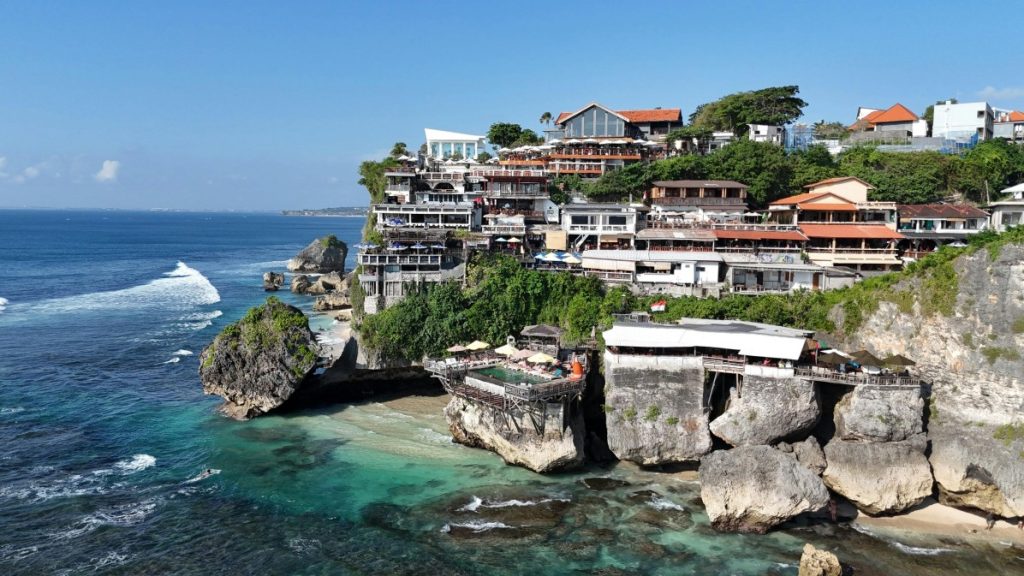
Bali effortlessly sparks your creativity. You can find golden beaches, emerald rice terraces, colorful temples, and fun festivals to keep any traveler entertained. When it comes to your ideal Bali, timing is important; the right season will allow your beaches to sparkle, your cultural experiences to deepen, and your holiday to remain stress-free. If you are a first timer, this guide is for you! We will give you the best time to visit Bali, weather breakdown by month, festival calendar, avoiding crowds, and other travel advice to plan your trip using The Tarzan Way, your AI-powered personalized trip planner. Bali Weather by Month: A Quick Overview Getting to know the weather in Bali is the first step for your trip planning. There are two main seasons in Bali: Dry Season vs Wet Season Dry Season (April to September): This is the sunniest time, perfect if you want to spend a lot of time on the beach, enjoy outdoor activities, and visit temples. You can expect clear blue skies, flat seas, and little rain. Wet Season (October to March): Expect heavy rainfall, humidity, and occasional storms. Don’t worry though—rain usually does not last long. Bali is still beautiful, just a little wetter. Pro Tip: Even in the wet season, mornings are often sunny, making it possible to enjoy sightseeing before the afternoon showers. Best Time to Visit Bali for Beaches If your main goal is lounging on soft sand, surfing, or snorkeling, timing is everything. Peak Beach Season: April to October Calm seas, clear waters, and sunny skies dominate. Popular beaches like Kuta, Seminyak, and Nusa Dua are at their best. Perfect for surfing beginners and experienced surfers alike. Best Months for Bali Beaches: July, August, and September—sunny days with gentle waves. Surfing Tip: The west coast is great from May to September, while the east coast shines from November to March. If you want to catch epic waves, check out The Tarzan Way’s surf-focused itineraries for personalized guidance. Best Time to Visit Bali for Culture Bali is more than just beaches; it is a living, breathing cultural gem. There are temples, ceremonies, and festivals everywhere, and scheduling your visit can change everything. Bali Festival Season: March to October Galungan & Kuningan: Celebrate the triumph and balance of good over evil with temple ceremonies, dances, and colorful offerings. Nyepi (Balinese New Year): A fascinating experience when the whole island honors a day of silence. Streets are deserted, flights are suspended, and a spiritual reset takes place unlike anywhere else in the world. Visiting Bali during Nyepi Festival: If you love culture, it’s worth timing your trip around this festival—but plan ahead since transport and activities are limited. The Tarzan Way can help schedule your activities perfectly around Nyepi for a truly immersive experience. Bali Crowds and Tourist Season Peak Season (July–August, Christmas–New Year): Expect busy beaches, higher hotel rates, and full attractions. Shoulder Season (April–June, September–October): Fewer crowds, pleasant weather, and great for photography. Off-Peak/Wet Season (January–March): Less crowded, more budget-friendly, but some rain expected. Cheapest Time to Visit Bali: January, February, and early March—perfect for travelers seeking deals and fewer crowds. Month-by-Month Guide: Bali Weather & Activities Month Weather Beach Activities Cultural Highlights January Wet, occasional storms Swimming limited Temple visits, indoor workshops February Wet, humid Low tourist crowds Local festivals, rice terrace walks March Transition to dry Surfing picks up Galungan preparations April Dry begins Ideal for beaches Temple ceremonies May Dry, sunny Snorkeling, diving Art festivals June Dry, cooler mornings Surfing, beach hopping Cultural tours July Dry, peak season Surfing, sunbathing Local performances August Dry, sunny Beach sports & surfing Ubud arts events September Dry, warm Perfect for beaches Temple visits October Dry to wet transition Surfing possible Festival season ends November Wet begins Limited beach time Temple ceremonies December Wet, humid Beaches less ideal Christmas celebrations, indoor activities Tips for First-Timers Visiting Bali Plan your beaches and cultural visits separately. Sunny mornings for temples, afternoons for beaches. Book accommodation early during peak months to avoid inflated prices. Use The Tarzan Way to customize your itinerary based on your interests and preferred timing. Pack for unpredictable weather if traveling during the wet season. A light raincoat and waterproof shoes are lifesavers. Frequently Asked Questions Q1. What is the best month to visit Bali? For first-timers, April to September is ideal for sunny beaches and cultural exploration. July and August are peak season months with vibrant festivals. Q2. Is Bali worth visiting during the rainy season? Yes! While it rains more, the island is lush and less crowded. Indoor activities, temples, and cultural tours remain accessible. Q3. Which season is best for experiencing Balinese culture? Dry season (April–September) is perfect. Festivals like Galungan and Nyepi happen around this time, offering an authentic cultural experience. Q4. When is the cheapest time to travel to Bali? January to early March is budget-friendly with fewer tourists. Hotels and flights are cheaper. Q5. Is July a good time to visit Bali? Absolutely! It’s sunny, perfect for beaches, and festival season is in full swing. Just expect more crowds. Q6. What is Nyepi Festival and should I plan my trip around it? Nyepi is the Balinese Day of Silence marking the new year. It’s unique, peaceful, and spiritual. If you plan carefully, it’s a one-of-a-kind cultural experience. Q7. Is Bali good for surfing year-round? Yes, but the west coast is best May–September, and the east coast shines November–March. Personalized surf itineraries are available through The Tarzan Way. Q8. How many days are enough for a Bali trip? A 7–10 day trip lets you cover beaches, cultural spots, and a couple of nearby islands comfortably. Q9. Is Bali too crowded during peak season? It can be busy, especially Kuta and Seminyak. Visiting during shoulder months like April–June or September–October ensures fewer crowds. Planning Your Bali Adventure the Smart Way Choosing the best time to visit Bali depends on your priorities—beaches, culture, or budget. For first-timers, the dry season between April and September offers the
When to Visit Dubai: Weather, Events & Travel Tips

Dubai is one of those cities that immediately ignites wanderlust. With its ultra-modern skyline, exhilarating desert activities, high-profile shopping festivals, and numerous events, it’s impossible not to want to pack your bags right now. But here’s the deal: the key to a great trip to Dubai lies not with where to go but when to go. The city’s weather and cultural events should tip the scales for many visitors into the realm of experience. For example, experiencing the cool evenings under the desert stars or shopping for bargains during shopping festivals can transform a vacation. If you find planning everything a bit overwhelming, relax! The Tarzan Way, an AI-powered trip planner can handle it all. You can receive a custom itinerary designed to captivate and entice you, from desert safaris to sunset yacht cruises, while you settle in to think of your outfits. This guide will explore the best time to visit Dubai based on its weather, its festivals, and its events so that your holiday is enjoyable, enjoyable, and exhilarating. Dubai Weather Throughout the Year Dubai has only two moods: hot and hotter. But the good news is, Dubai weather in winter (November to March) is an absolute delight. Days are warm (24°C–28°C / 75°F–82°F), nights are cooler (15°C–18°C / 59°F–64°F), and you can comfortably explore the city without hiding indoors. Flights and hotels might be slightly pricier, but trust me, sipping karak chai while walking along Dubai Marina in December makes it worth every rupee (₹30,000–40,000 or AED 1,300–1,700 for mid-range hotels). Now, summer (June to September) is another story. Temperatures soar above 40°C (104°F), humidity can be brutal, and outdoor sightseeing is tricky. That said, it’s the best season for budget Dubai tourism, because hotels slash their rates almost by half. If you don’t mind living in air-conditioned bliss with occasional mall-hopping, you’ll save quite a bit. If you want the perfect mix of fun, comfort, and affordability, late October to mid-March is your golden window. Key Events & Festivals You Can’t Miss When is Ramadan in Dubai? Ramadan is one of the most unique times to experience the city. Dates shift every year (in 2025, it’s expected to start in February–March). While some restaurants close during the day, evenings come alive with incredible Iftar buffets, cultural shows, and night markets. If you’re worried – don’t be. Tourists are welcome, and respecting local customs (no eating in public before sunset) makes you part of the vibe. Visiting during Ramadan also often means discounted airfares and hotels. Dubai Shopping Festival Dates This is the Super Bowl of shopping! The Dubai Shopping Festival usually runs from late December to January, and it’s not just about buying handbags. Expect fireworks, raffles, concerts, and deals that’ll tempt even the most budget-conscious traveller. For example, that Burj Khalifa view ticket costing around ₹7,467 (AED 330)? You might snag combo passes at lower rates during DSF. Fashion, electronics, jewelry – you name it, it’s on sale. If you love a good bargain, time your trip for this. Dubai Events in Winter & Spring Apart from Ramadan and DSF, winter is packed with outdoor festivals – music shows, food carnivals, and art fairs. Events like Global Village (entry tickets start at ₹984 or AED 40) give you a glimpse of cultures from around the world. In March, you’ve got events like the Dubai Food Festival and beach parties, making it a lively month. No wonder so many travellers say that planning your Dubai itinerary around events is a smart move. Popular Attractions by Season Here’s where the fun begins. Timing your trip isn’t just about climate – certain Dubai attractions feel more magical in specific seasons. Winter (Nov–Mar) Perfect for Desert Safari (₹1,801 / AED 80), Miracle Garden, and walking around Old Dubai. Don’t miss a dinner cruise at Dubai Marina (₹4,322 / AED 190). Summer (Jun–Sep) Beat the heat with indoor attractions like Dubai Aquarium (₹2,593 / AED 114) or the Museum of the Future (₹3,481 / AED 153). Spring (Apr–May) Beach weather! Ideal for Jumeirah Beach, Kite Beach, or splurging on a private yacht ride (₹6,002 / AED 265). Autumn (Oct) A sweet shoulder season – fewer crowds, decent deals, and pleasant evenings to explore souks and street food. Want more offbeat ideas? Check out our blog on Top Free & Offbeat Things to Do in Dubai. Stay, Budget & Costs Let’s talk numbers, because planning a Dubai trip always comes down to rupees and dirhams. Mid-range hotels: ₹6,000–₹9,000 per night (AED 265–400) Luxury hotels: ₹15,000+ per night (AED 650+) Budget stays: Hostels start at ₹1,500 per night (AED 65) If you’re smart about timing, you’ll save a lot. For example: Winter peak season → Higher prices, but best experience. Summer → Huge discounts on Dubai hotels. Transport is also reasonable: Dubai Metro rides cost just ₹60 (AED 3) for short trips, while taxis cost ₹200–₹250 (AED 10–12) for the same. All in all, a 7-day Dubai itinerary can cost anywhere between ₹80,000 (AED 3,500) for a budget traveller to ₹2.5 lakh (AED 11,000) for someone who loves luxury. Sample Seasonal Itineraries To make it fun, here’s how you can plan your days depending on the season: Winter Dubai Itinerary (5 days): Desert Safari → Miracle Garden → Burj Khalifa → Global Village → Shopping Festival. Summer Dubai Itinerary (5 days): Museum of the Future → Dubai Mall Aquarium → Ski Dubai → Luxury Spa → Indoor theme parks. Ramadan Dubai Itinerary (5 days): Iftar hopping → Old Dubai souks → Dubai Creek → Evening desert safari → Shopping deals. See how the timing changes everything? Activities You Can Book Through The Tarzan Way, you can instantly book experiences like: Desert Safari with quad biking – from ₹1,801 (AED 80) Helicopter flight over Palm Jumeirah – from ₹16,855 (AED 740) Dubai Frame entry – ₹984 (AED 40) Sunset Dinner Cruise – ₹4,322 (AED 190) Burj Khalifa Top deck – ₹7,467 (AED 330) There are many more activities to explore with amazing
Dubai on a Budget: Top Free & Offbeat Activities

When you hear the word Dubai, what comes to mind? Probably glittering malls, sky-touching skyscrapers like the Burj Khalifa, and ultra-luxury experiences. But here’s the secret most first-time Indian travellers don’t realize: Dubai is full of free and offbeat things to do that can make your trip unforgettable—without burning through your savings.From vibrant souks and heritage districts to flamingo spotting, free beaches, and hidden art alleys, Dubai has plenty of gems that cost little or nothing. If you’ve been worried about the budget Dubai trip cost from India, this guide will show you how to experience the city differently. To make it even easier, you can plan smarter with The Tarzan Way, an AI-powered trip planner that curates personalized itineraries—blending iconic sights, budget hacks, and hidden cultural treasures for Indian tourists. What’s in This Blog: Why explore free & offbeat Dubai Top free attractions in Dubai Offbeat cultural & local experiences Night-time free experiences Parks, beaches & nature escapes Cheap food for Indian travellers Suggested 5-day itinerary Cost of a budget Dubai trip from India Why plan with The Tarzan Way FAQs Why Free & Offbeat Dubai is Worth Exploring Most travellers assume Dubai is all about shopping malls and five-star resorts. While those are fun, they’re also expensive. The real magic of Dubai is in its free cultural experiences, old neighbourhoods, local beaches, and offbeat art scenes. For Indian travellers, this means you can enjoy a fulfilling vacation even if you’re on a tight budget. The budget vs luxury travel Dubai cost difference is massive – while a luxury traveller might spend ₹2–3 lakh in a week, a smart budget traveller can explore Dubai for just ₹55,000–65,000 including flights, visas, and stays. That’s why you should know how to travel Dubai on a tight budget. Free attractions balance your trip beautifully. Top Free Things to Do in Dubai Here’s where to start ticking off your free bucket list: Dubai Fountain Show – At the base of the Burj Khalifa, this stunning water and light show is completely free. Evening shows are magical. Old Souks (Gold & Spice Souk) – You can wander through traditional markets in Deira, soak in the smells, sights, and sounds. Connects perfectly with our blog Old Dubai’s Hidden Gems: Cultural Charms for a Romantic Getaway. Dubai Mall Aquarium (exterior view) – Even if you don’t buy a ticket, you can admire the massive aquarium tank from the mall itself. Al Fahidi Historical District – A charming heritage area with art cafes, galleries, and museums (many are free or cost under ₹200 / AED 10). These are perfect Dubai free attractions for Indian tourists who want cultural vibes without paying for high-end tours. Offbeat Dubai Experiences If you’re the kind of traveller who enjoys going off the usual tourist path, these spots will surprise you: Dubai Creek Walking Tour – Take a slow stroll along Dubai Creek. For just ₹22 (AED 1), hop on an Abra wooden boat ferry. A cheap thrill with authentic local feel. Street Art in Al Karama & Al Fahidi – Dubai isn’t all polished glass towers; graffiti and murals here tell stories of its people. Ras Al Khor Wildlife Sanctuary – Just outside the city, this free sanctuary is home to thousands of flamingos and other migratory birds. Perfect for nature lovers. Alserkal Avenue – An offbeat art and creative district. Most exhibitions are free to enter, and you’ll find local cafés buzzing with energy. These truly define offbeat Dubai experiences and feel like hidden gems in Dubai free for curious travellers. Beaches, Parks & Nature (Free to Visit) Not all beach days need to be expensive resort experiences. For Indian families, these spots are the spot to spend the best family time: Jumeirah Public Beach – You get free access, clean sands, and a great view of Burj Al Arab. Kite Beach – It is quite popular with locals for jogging, kite surfing, and street food kiosks. Zabeel Park – It is a huge green space. Sometimes offers free entry on special days. Dubai Miracle Garden – Though it’s not free (₹1,200 / AED 50), but very affordable compared to other attractions and worth a mention. These free parks & gardens in Dubai, make great picnic spots for families. Night-time Free & Cheap Things Dubai at night doesn’t have to mean expensive clubs. Try these instead: Dubai Fountain Show (again!) – Different shows run every half hour in the evening. Dubai Marina Walk – A lively promenade lined with yachts and cafés. Walking is free, and the views are priceless. Global Village – Entry costs only ₹240 (AED 10). A budget-friendly carnival of food, culture, and entertainment. This is your guide to the best free things to see in Dubai at night—beautiful, lively, and easy on the pocket. Cheap Food Options for Indian Budget Travellers Food is often where budget trips fail. But Dubai is heaven for street eats and budget meals. Shawarma – ₹150–200 (AED 6–8) at small shops across Bur Dubai and Deira. Falafel Sandwich – Around ₹100 (AED 4), tasty and filling. Veg/Chicken Biryani – ₹300–400 (AED 12–15) in Indian restaurants near Meena Bazaar. Street Sweets & Tea – ₹50–80 (AED 2–3) for a Karak chai and sweet snacks. This is exactly what travellers mean when searching for cheap food options in Dubai for budget travellers. Suggested 5-Day Free & Offbeat Dubai Itinerary Here’s a sample plan for exploring without overspending: Day 1 – Dubai Mall, Fountain Show, Burj Park. Day 2 – Old Souks, Al Fahidi Historical District, Abra ride across Dubai Creek. Day 3 – Jumeirah Beach + Kite Beach, Ras Al Khor Wildlife Sanctuary. Day 4 – Alserkal Avenue art district, Dubai Marina Walk at night. Day 5 – Parks + free leisure day, explore more souks or enjoy street food in Bur Dubai. This doubles as one of the best budget itineraries Dubai 5 days—covering free, cheap, and cultural attractions. How Much Does a Free + Budget Dubai Trip Cost for Indians?
Top 10 Most Haunted Places in the World You Can Visit in 2025

Introduction: Haunted Travel Itinerary for 2025 It’s not always beaches and mountains that make travel fun. Sometimes it’s about mysteries. Imagine a haunted travel itinerary that takes you to the scariest places in the world on a list of haunted towns. From creepy castles to spooky forests, these places offer unforgettable trips full of ghost stories, unique activities, local food, and festivals. Here is a full list of the world’s most haunted places that you can visit in 2025. 1. Bhangarh Fort, India Many people call Bhangarh Fort the “most haunted place in India” because of the stories about its haunted ruins and ghosts. People aren’t allowed to enter the fort after dark, but you can look around during the day. Activities to Try: Visit the crumbling temples inside the fort, look for handmade goods in the villages nearby, and eat traditional Rajasthani cuisine. Unique Highlight: Combines scary folklore, history, and architecture. Pro Tip: Get a local guide to help you find secret spots and learn about hidden stories. Avoid missing secret spots. 2. The Tower of London, UK Royal executions and incarcerations took place at this famous location. It’s one of the spookiest places in London because of ghost sightings, particularly of Anne Boleyn. Activities to Try: See the Crown Jewels, go on the Yeoman Warders’ ghost stories tour and visit nearby pubs said to be haunted. Unique Highlight: A unique blend of paranormal experiences and British history. Pro Tip: To save time and money, purchase tickets in advance online. 3. Eastern State Penitentiary, USA The abandoned prison in Philadelphia, renowned for its eerie cellblocks. Ghostly whispers are frequently captured on tape by paranormal investigators. Activities to Try: Take part in live ghost hunts, visit art exhibits within the prison, or attend the “Terror Behind the Walls” Halloween festival. Unique Highlight: A prison-turned-cultural center with spooky nights. Pro Tip: For the best spooky haunting experience, visit during Halloween. 4. Château de Brissac, France Known as the “Giant of the Loire Valley,” Lady in Green haunts this castle. Activities to Try: Join evenings of classical music, take a wine tour through the castle vineyards, or spend the night for a chilling adventure. Unique Highlight: Where royal luxury meets eerie legends. Pro Tip: Make reservations for overnight stays as early as possible because they are limited and in high demand. 5. Monte Cristo Homestead, Australia This historic homestead is regarded as Australia’s most haunted house. Ghostly figures and glowing lights are reported by visitors. Activities to Try: Take part in escorted ghost tours, visit neighboring historical sites in Junee, and taste Australian bush cuisine. Unique Highlight: Tours are more intimate because it is still privately owned. Pro Tip: For the spookiest tales, take their candlelit night tour. 6. Edinburgh Castle, Scotland Packed with legends and history, Edinburgh Castle is home to a headless drummer and prisoner ghosts. Activities to Try: Take part in ghost walks in subterranean vaults, visit the Scottish National War Museum, and enjoy local bagpipe performances. Unique Highlight: A haunted fortress that hosts annual cultural festivals. Pro Tip: Put on layers of warmth. Even in the summer, Scotland’s nights can get cold. 7. The Stanley Hotel, USA Stephen King’s The Shining was inspired by this Colorado hotel. At night, guests frequently hear phantom piano notes. Activities to Try: Spend the night in a haunted room, take a ghost tour, and stargaze in the Rockies around the hotel. Unique Highlight: Combines paranormal travel with a luxurious stay. Pro Tip: For the ultimate ghostly experience, ask for Room 217. 8. Aokigahara Forest, Japan Known as the “Suicide Forest,” this dense forest is hauntingly silent and is said to be haunted by ghosts. Activities to Try: Discover the nearby lava caves, take a hike along the picturesque Mount Fuji trails, and sample authentic Japanese street cuisine in the nearby towns. Unique Highlight: A forest where the stillness itself seems supernatural. Pro Tip: For safety and respect, always travel with a certified guide. 9. Poveglia Island, Italy This Venetian island, notorious for its troubled past, was once a plague quarantine station. It is regarded by many as one of the most haunted islands in the world. Activities to Try: Reserve private boat tours, savor local seafood, and discover undiscovered canals in Venice. Unique Highlight: A completely abandoned island with chilling ruins. Pro Tip: Schedule your tours in advance because access is seasonal and limited. 10. Hoia Baciu Forest, Romania This forest in Transylvania is known as the “Bermuda Triangle of Romania.” Ghost encounters and UFO sightings have made it famous. Activities to Try: Take part in paranormal workshops in Cluj-Napoca, go on night hikes, and taste Romanian street food nearby. Unique Highlight: A circular clearing where no trees grow. Pro Tip: For safety, never go alone; always go in groups. Haunted Travel Planner (Sample Itinerary) 2-Day Haunted Itinerary (Edinburgh, Scotland): Day 1: Tour of Edinburgh Castle and Old Town Ghost Walk. Day 2: Exploration of vaults and a night of haunted storytelling in a pub. 3-Day Haunted Itinerary (For USA Visitors): Day 1: In Philadelphia, start with the exploration of the Eastern State Penitentiary. Day 2: Take a nighttime ghost tour and drive to the Stanley Hotel. Day 3: Dedicate the day exploring nearby Colorado ghost towns. Pro Tip: To balance out the spooky experience, always include a daytime sightseeing activity. Haunted Travel Costs & Budgeting It’s not always expensive to explore haunted places. Castles and prisons charge $20 to $100 to enter. Guided ghost tours are extra, and haunted hotels range from $150 to $300 per night. Pro Tip: Night tours have their own budget and are typically not covered by daytime tickets. So better to separate a budget for night tours with day tours. Festivals & Food at Haunted Destinations India: After visiting Bhangarh, taste fiery Rajasthani thalis. UK & USA: Celebrate Halloween festivals with costumes, themed drinks, and ghost hunts. Japan: Trips are made more memorable by the seasonal Japanese snacks like takoyaki and yakitori near Aokigahara. Romania:
Vaishno Devi Travel Guide 2025: Cost, Itinerary, Tips & How to Plan Your Yatra
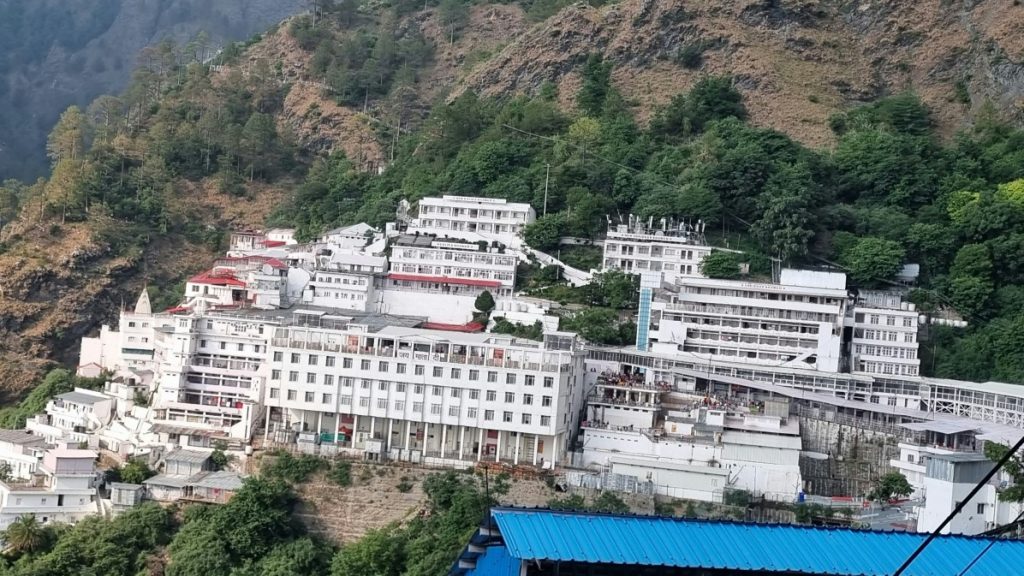
What’s in this Blog Why Vaishno Devi is a Must-Visit Pilgrimage How to Reach Vaishno Devi Best Time to Visit Vaishno Devi Yatra Registration & Permits Trip Cost & Budgeting Where to Stay (Katra & Nearby) Itinerary Suggestions – 2-Day and 3-Day Trip Plans Helicopter, Pony & Porter Services Things to Carry & Travel Tips Nearby Places to Visit FAQs Final Thoughts Why Vaishno Devi is a Must-Visit Pilgrimage Going to Vaishno Devi in 2025 is more than just a religious pilgrimage. It’s an experience rich in Himalayan beauty, culture, and faith. Vaishno Devi, one of India’s holiest shrines, is tucked away in Jammu’s Trikuta Hills. In the eyes of pilgrims, Mata Vaishno Devi grants the desires of those who come with pure devotion. In addition to the spiritual aspect, the trip offers beautiful trekking routes, friendly locals, and the opportunity to discover hidden treasures. This vaishno devi travel guide includes all the necessary information for anyone planning a vaishno devi trip 2 days itinerary or vaishno devi trip 3 days itinerary. Pro Tip: For smoother planning, reserve your lodging and yatra registration at least two months in advance. How to Reach Vaishno Devi There are multiple transport options to reach Vaishno Devi : By Train: The closest significant train station is Jammu Tawi, which is 48 kilometers from Katra. It is connected to Delhi, Mumbai, and Kolkata by regular trains. By Flight: The closest significant airport is Jammu Airport, which is 50 km away. From there,buses and taxis are too frequently available to travel to Katra . By Road: As Katra has brilliant road connections to Srinagar, Udhampur, and Jammu to travel by road. There are plenty of deluxe buses and taxis too. The actual yatra starts with a 13-kilometer trek to the Bhawan (shrine) from Katra. Pilgrims have three options: walk, rent ponies, or take a helicopter. Pro Tip: To prevent travel fatigue before beginning the trek, get to Katra one day early. Best Time to Visit Vaishno Devi Although the shrine is open all year, there are special experiences to be had in different seasons: Spring (March–May): Beautiful scenery and pleasant weather. Monsoon (July–September):Fewer tourists, but be cautious of landslides. Autumn (October–November):Clear skies and joyous occasions like Navratri. Winter (December–February):snow-covered pathways, fewer tourists, and serene darshan. Pro Tip: Plan during Navratri, but make reservations well in advance, if you want a festive atmosphere. Yatra Registration & Permits Before beginning the yatra, each pilgrim is required to complete the Vaishno Devi online registration. Registering is free and can be done at Katra counters or on the official Shrine Board website. A yatra slip is mandatory at checkpoints. Rules to follow: Carry a valid ID proof. Children under the age of five are not required to register. Refrain from bringing big bags or prohibited items. Pro Tip: For easy passes and updates, download the “Mata Vaishno Devi Yatra Registration” mobile app. Trip Cost & Budgeting The Vaishno Devi trip cost is determined by the services, travel, and lodging selected: Transport (Delhi to Katra): ₹1,500–₹3,000 by train, ₹3,500–₹6,000 by flight. Stay in Katra: The cost of under-budget dharamshalas will be in the range of ₹500–₹1,000 and mid-range hotels is of ₹1,500–₹3,000. Food: The per day price of simple vegetarian meals is of around ₹300–₹600. Helicopter Ride: The estimated cost of helicopter’s one way ride is ₹1,840 per person. Other Expenses: Ponies, palanquins, or porters cost extra. While a comfortable trip may cost ₹12,000 to ₹15,000, a more affordable trip can be planned for ₹6,000 to ₹8,000 per person. Pro Tip: To reduce the cost of food while trekking, bring snacks and reusable water bottles. Where to Stay (Katra & Nearby) There are many different lodging options in Katra: For Pilgrims: Dharamshalas run by trusts and guesthouses near the shrine. For Families: There are under budget accommodations with shuttle services. Vegetarian dining options are too available. For Comfort Seekers: Premium hotels offering mountain views and spa treatments. Pro Tip: To save time ,its better to choose a hotel near the yatra registration counter. Itinerary Suggestions – 2-Day and 3-Day Trip Plans 2-Day Vaishno Devi Itinerary Day 1: Get to Katra, register, and begin the hike that evening. Arrive at Bhawan Darshan at night. Day 2: Go back to Katra in the morning, check out the local marketplace, and then leave for Jammu. 3-Day Vaishno Devi Travel Planner Day 1: Arrive in Katra, relax, and visit neighboring temples. Day 2: Trekking begins early in the morning, with a visit to Bhairon Temple and darshan at Bhawan. Day 3: Before departing, return to Katra and explore Patnitop or Shiv Khori. Pro Tip: Add an extra day if you want to comfortably visit neighboring attractions. Helicopter, Pony & Porter Services Helicopter: For the vaishno devi helicopter booking, use the Shrine Board website to make an online reservation. It takes eight minutes to travel from Katra to Sanjichhat. Ponies & Palanquins: For those who are unable to trek, it is available from Katra. Porters: During the yatra, assist with carrying children or luggage. Although prices vary, in order to prevent overcharging, payments must be made at authorized counters. Pro Tip: Because spots fill up quickly, reserve helicopter rides 60 days in advance. Things to Carry & Travel Tips Light woolens or jackets depending on the season. Comfortable walking shoes. Painkillers, prescription medications, and a first aid kit. For night trekking,Torchlight or headlamp is must to carry. Energy bars and dry fruits for endurance. Pro Tip: Since plastic bags are prohibited near Katra and the shrine, don’t bring them. Nearby Places to Visit After your darshan, if you have time, then check out these attractive places to visit near vaishno devi: Patnitop: A hill station featuring adventure sports and meadows. Shiv Khori: A cave shrine dedicated to Lord Shiva. Jhajjar Kotli: It has a beautiful picturesque riverside picnic area. Bahu Fort, Jammu: It’s a historic fort featuring a Kali temple. Pro Tip: Add an extra day to your itinerary so that you can visit Shiv
Dubai on a Budget: Tips for Affordable Travel

When most people think about Dubai, they probably picture the skyscrapers, the shopping malls, and the resorts. But here’s a shocker: you don’t have to spend a lot of money in Dubai! When careful and thoughtful planning is organized, a budget Dubai trip cost from India can be surprising—of course, in a good way! So, whether you are a student, a backpacker traveling solo, or a family on a budget, you can visit and enjoy Dubai without going overboard. The best part? With The Tarzan Way, an AI-generated personalized trip planner, you will be able to create a budget, interest, and travel style-based itinerary for your trip. It’s like a traveling buddy that helps you plan smart and keep costs within reason. Why Travel Dubai on a Budget? Despite its name as a luxury destination, the truth is that Dubai is very welcoming to budget travellers. Between cheap meals in Indian restaurants in Karama, free beach access along Jumeirah, and inexpensive, efficient public transport services, Dubai has something for everyone. The key is the timing of your trip, smart bookings and thoughtful experiences—all of which will maximize value. If you’re still wondering, “How to travel Dubai on a tight budget?”– this guide is for you. Flights – Cheap Flights from India to Dubai One of the most significant costs is airfare. Fortunately, given that Dubai is a very well-connected city to India and that there are many airlines on this route, prices can be influenced by competition. Tips about cheap flights India to Dubai: You can secure the best fares by booking 3–4 months in advance. Low-cost airlines like Air India Express, SpiceJet and IndiGo also tend to sell ₹8,000–10,000 one-way fares. You can also sign-up for price alerts and check partner sites and comparison booking sites. If you have flexibility with dates, it usually equals lower-cost fares. Flying on off-peak days (usually mid-week) is also usually less expensive. For those watching expenses, tracking off-peak travel Dubai deals from India is the key. Cheapest Time to Visit Dubai from India When do you want to go. The most cost-effective time to travel to Dubai from India is generally during the summer months (June-August). The weather can be extremely hot, but this is when hotels and flights offer high discounts. Shoulder seasons – September to early November and late February to March – can also provide some good deals but, again, are usually considered manageable weather. If you want to prioritize economy over comfort, you should avoid going in December or New Year’s, as this is when Dubai experiences its highest prices. Visa – Dubai Visa Cost for Indians 2025 Plan an India trip? You’ll need a visa. Here is what to know: Dubai visa for Indians cost 2025 range from ₹6,500–₹8,500 depending on the provider. Typically, it only takes a couple of working days to process (3–5). If you are traveling for a short time, a 14-day tourist visa is the cheapest option. And what about Dubai visa on arrival Indians eligibility & cost? As of now, Indian passport holders with a valid US/UK/Schengen visa are eligible to apply for a visa on arrival in Dubai. The fee is approximately ₹2,000–₹2,500, which would be easy for any frequent international travel to handle. Accommodation – Affordable Hotels in Dubai for Indian Tourists There are many options for accommodation than just luxurious resorts. Travelers on a budget will have plenty of places to stay at across the price spectrum: Hostels and guesthouses: Start around ₹1,500–₹2,000 a night. Budget Hotel: ₹3,000 to ₹5,000 a night for basic services. You can consider cheap options in Deira or Bur Dubai as opposed to staying Downtown. Some of the cheapest hotels in Dubai for Indian tourists are located close to the metro and also save time and money from transportation. Food – Cheap Food Options in Dubai for Budget Travellers Dubai is a paradise for food enthusiasts. If you seek luxurious dining, you can find it there. Conversely, if you’re looking to maximize your travels as a budget traveler, you can find an infinite number of food options that are budget-friendly. For budget-oriented food options in Dubai: Dubai street food costs: Shawarma for ₹150, falafel for ₹120, or a full Indian thali at Karama between ₹400 – ₹600. Super —an amazing idea for grab-and-go food is hitting up places like Carrefour -or Lulu (both grocery stores) to grab a quick meal. Old Dubai has cheap meals in Pakistani, Indian, and Filipino places that serve a generous meal for under ₹700. Food can be as cheap or expensive as you want to make it while in Dubai. It’s all about where you go to eat. Transport – Saving Money in Dubai with Metro & Buses Dubai’s metro and buses are clean, safe, and efficient. A Nol Card (public transport pass) starts from ₹500–₹1,000, depending on zones. Metro rides are as low as ₹60–₹150. Daily passes are cheaper if you plan to hop around. If you compare saving money in Dubai transport like metro/buses vs taxis, public transport wins, hands down. A short taxi ride may cost you 700-800 rupees, with the same coverage in the metro costing less than 150 rupees. Budget Itineraries – Dubai in 5 Days If you are curious about what a best budget itinerary Dubai 5 days looks like, then here is a sample itinerary: Day 1: Explore Old Dubai – Al Fahidi, spice souks, and gold souk (free to wander). Day 2: Jumeirah Beach (free), stroll the Dubai Marina, and have dinner at Karama for inexpensive food. Day 3: Burj Khalifa (the cheapest tickets are online), the Dubai Mall, and then watch the fountain show at night (free). Day 4: Oregon Desert Safari budget package (₹2,500-₹3,500) and an evening creek stroll. Day 5: Miracle Garden (entry fee is affordable) and then Global Village (cheap eats + entry). This mix balances some free & cheap things to do in Dubai that are must-sees while you are visiting. Free & Cheap Things to
Goa Beyond Beaches: Explore Culture, Heritage & Local Life
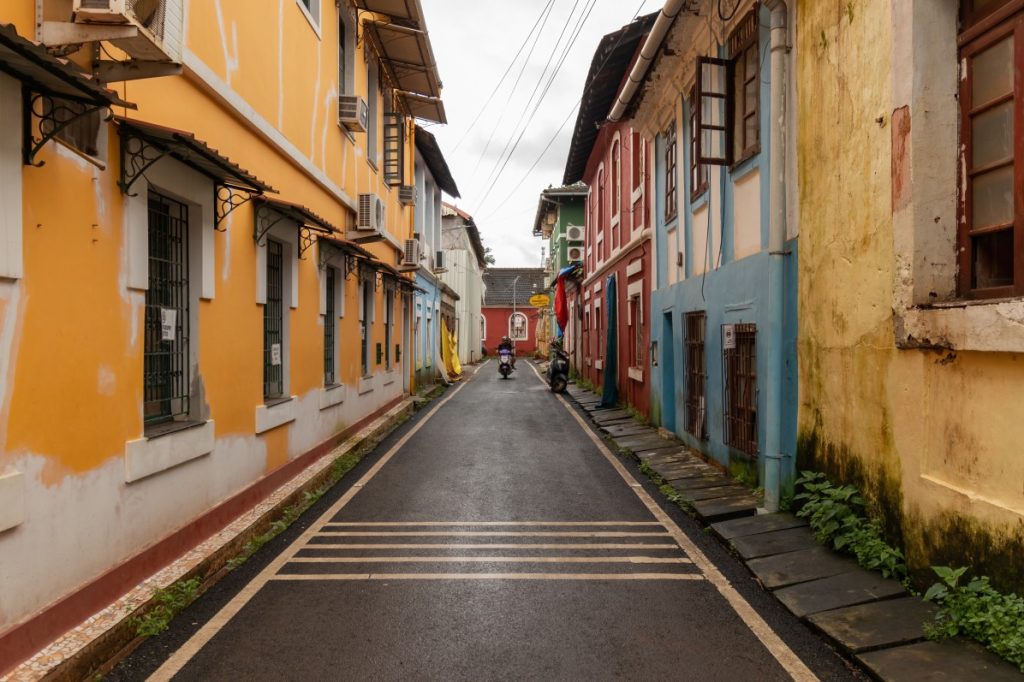
When you think of Goa, the first thing that probably comes to mind is sandy beaches, sun-drenched parties, and exciting nightlife. However, Goa is a lot more than that, blending together all of its Portuguese influence, its ancient temples, colorful festivals, and secret traditions to give travelers a real experience that is much fuller and more enriching. In this blog, we will take you to Goa beyond beaches – through its cultural roots, historical sites, heritage villages, art, culinary offerings, music, and festivals. And for everyone, whether you love history, enjoy cultural trips, or are just looking for another side of Goa, this blog will help you with your trip. We have made it simple for you to plan your trip by providing you with a helpful AI powered personalized travel planner, The Tarzan Way, which curates experiences just for you. What’s in this Blog Goa’s Unique Cultural Identity Portuguese & Colonial Heritage Temples, Churches & Spiritual Landmarks Goan Festivals & Celebrations Heritage Villages & Old Goa Charm Art, Music & Local Traditions Food & Culinary Heritage Museums & Historical Landmarks Suggested Itinerary: Goa Beyond Beaches Things to Remember Before You Go FAQs Final Thoughts Goa’s Unique Cultural Identity Goa is frequently described as the crossroads of the East and the West. Its Portuguese colonial history has resulted in breathtaking architecture, food that is a fusion of European and Indian, and cultural traditions, making it a hub for Goa cultural experiences. Goa feels distinct from other places in India because it has a unique mix of relaxed village life alongside lively cosmopolitan culture. Portuguese & Colonial Heritage Goa was ruled by the Portuguese for over 450 years. Their strong impact can be seen everywhere within the space of Goa, from churches in the Baroque-style to colonial mansions with ports and pillars. The Goa heritage sites are intact and respectfully maintained. Basilica of Bom Jesus: This site is a UNESCO World Heritage Site and houses the mortal remains of St. Francis Xavier. Se Cathedral: Recognized for its golden bell and stunning Portuguese architecture Goa. Fontainhas (Latin Quarter, Panjim): A lively neighborhood boasting Portuguese-style houses, numerous balconies, and narrow lanes in-between. Heritage Mansions: The Palácio do Deão and Braganza House represent Indo-Portuguese architecture. For hidden experiences near beaches, read: Best Hidden Beaches in Goa for Peaceful Escape. Temples, Churches & Spiritual Landmarks In addition to the spectacular churches, Goa has ancient Hindu temples, showcasing the spiritual blend in all its richness. Mangeshi Temple: This temple is dedicated to Lord Shiva and has an impressive entrance and a lamp tower with seven stories. Shantadurga Temple: A peaceful temple complex located in Ponda. The Church of St. Cajetan: This church is constructed in the image of St. Peter’s Basilica in Rome. The combination of Hindu and Christian worship sites illustrate Goa religious sites and the state’s unique cultural faith and coexistence. Goan Festivals & Celebrations Goa festivals are not just events – they are vibrant cultural showcases. Carnival (February): A Portuguese legacy with parades, dances, and music. Sao Joao (June): Celebrated with water games and vibrant rituals. Shigmo (March): A Hindu spring festival with folk dances and colorful parades. Christmas & New Year: The most vibrant season with midnight masses, street lights, and festivities. If you love festivals, check out Goa Bliss: AI-Guided Wellness Retreats for holistic cultural experiences. Heritage Villages & Old Goa Charm If you want to truly experience Goa’s heart, step away from the beaches and explore Goa’s heritage village life. Chandor: Known for Portuguese mansions and heritage homes. Loutolim: A quaint village with colonial homes and the Big Foot Museum. Old Goa: A UNESCO site with historic churches and museums. Saligao & Siolim: Villages that preserve Goan rural lifestyle with scenic charm. Art, Music & Local Traditions Goa is the hub of creativity – art and music flow in Goa’s culture. Goan Folk Music: Mando and Fado are traditional Goan musical styles. Goa Chitra Museum: Displays traditional farming tools and Goan heritage. Kala Academy: A cultural hub hosting exhibitions and performances. Local Dance Forms: Fugdi, Dhalo, and Dekhni depict Goan traditions. Music lovers should not miss Goa’s Nightlife: A Guide to the Lit Nightlife for a modern contrast. Food & Culinary Heritage Goan food & cuisine is a cultural experience in itself – blending Konkani, Portuguese, and coastal flavors. Signature Dishes: Vindaloo, Xacuti, Bebinca (dessert), Sorpotel, and Sannas. Seafood: Fresh fish curries and prawn balchao. Markets: Mapusa and Panjim markets for spices and local snacks. Feni: A local cashew liquor that’s part of Goa’s cultural identity. Foodies should read Top Restaurants in Goa and Gokarna for dining recommendations. Museums & Historical Landmarks Some of Goa’s cultural treasures are preserved in its museums: Goa State Museum: Documents Goan history, art, and culture. Naval Aviation Museum: India’s only museum dedicated to naval aviation. Big Foot Museum, Loutolim: Depicts rural Goan life and legends. Suggested Itinerary: Goa Beyond Beaches Day 1: Explore Old Goa – Basilica of Bom Jesus, Se Cathedral, St. Augustine ruins. Day 2: Explore Panjim – Fontainhas walk, local markets, art galleries. Day 3: Go for heritage villages like Chandor & Loutolim, Big Foot Museum. Day 4: Have the cultural experiences – attend a folk performance, cooking class, or Fado night. Day 5: Explore local cuisine, museums, and end with a wellness retreat. Planning a longer trip? Read: Top Attractions to Include in Your Goa Travel Itinerary and South Goa Unplugged: Exploring the Quieter Side. Things to Remember Before You Go Dress modestly when visiting temples and churches. Carry cash, especially in rural heritage villages. Hire local guides for deeper cultural insights. Respect traditions and ask permission before photographing locals. Use The Tarzan Way for curated heritage tours and AI-powered trip planning. FAQs Q. What is special about Goa? Goa is special for its mix of beaches, Portuguese heritage, vibrant festivals, and rich food culture. Q. What is special in Goa for girls? Shopping in flea markets, wellness retreats, yoga, and safe nightlife options make Goa appealing for girls.
Ultimate Japan Travel Guide: 7-10-14 Day Itinerary for Every Traveler
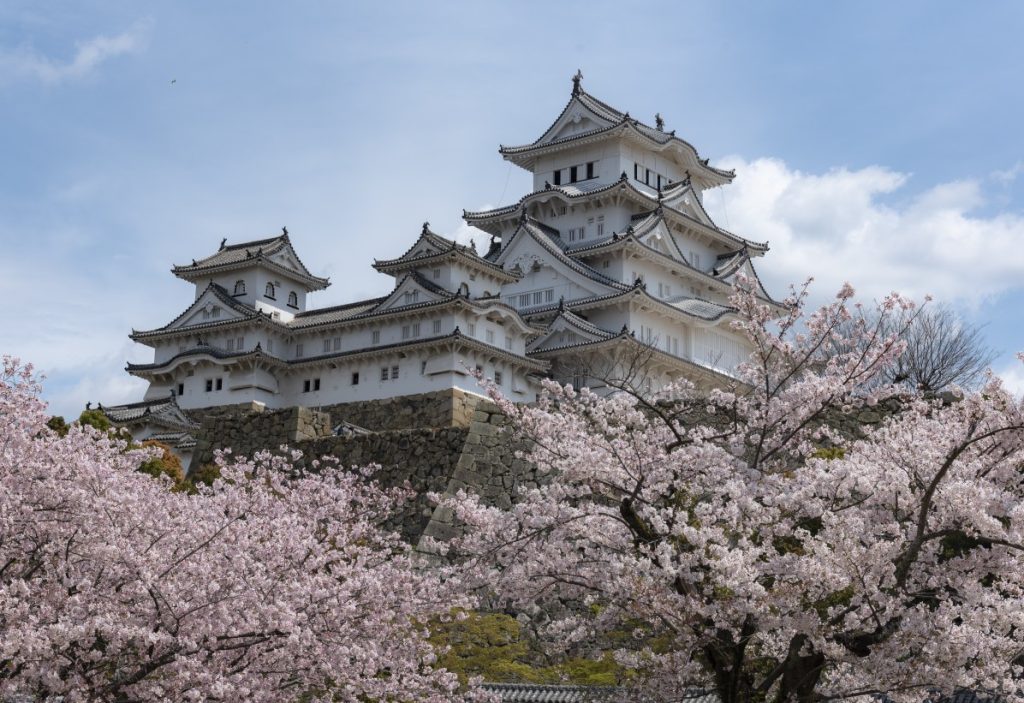
Have you ever wanted to stroll under the cherry blossom trees in the streets of Tokyo, enjoy a piping hot bowl of ramen in Osaka, or relax in a traditional Japanese onsens in Hakone with views of Mt. Fuji? A visit to Japan can be a lot to take in at first—so many cities, so much culture, and everything in between. The good part is, whether you are visiting for 7, 10, or 14 days, you can create the perfect itinerary in Japan that includes the must-see’s and the unique local experiences too. Think of this blog as your Japan trip planner—a mix of essentials, suggested itineraries, Japan travel tips, and hacks from a local. If you are finding it difficult to get a detailed Japan travel guide that answers your burning questions, you are in the right place! What’s in this Blog? Why Plan a Japan Itinerary? 7 Day Japan Itinerary 10 Day Japan Itinerary 14 Day Japan Itinerary Japan Travel Essentials Why Plan with The Tarzan Way FAQs Final Thoughts Why Plan a Japan Itinerary? Japan is certainly a country where “winging it” won’t work. With a combination of megacities, countryside trips, world-class transport, and cultural variations, a Japan itinerary can make your experience that much better. The Japan Rail Pass is an excellent way to save money when you travel long distances, if you have well-planned routes. Popular destinations, such as Arashiyama Bamboo Grove or TeamLab Tokyo, also require advance tickets. Seasonal experiences (like cherry blossoms or autumn leaves) can entirely alter your journey and must be part of a proper Japan holiday guide. It’s the thought and creation of a detailed Japan trip planner that can improve your experience whether you are looking for a honeymoon itinerary, budget loop, or food and culture journey. 7 Day Japan Itinerary If you’re in Japan for just one week, don’t panic—you’ll still get to see the best sights. Option 1: Classic Golden Route (First-Timers) Day 1-2: Tokyo – Shibuya crossing, Senso-ji Temple visit, Tsukiji Outer Market, & nightlife in Shinjuku. Day 3: Nikko or Hakone Day Trip, hot springs and views of Mt. Fuji. Day 4-5: Kyoto – Kiyomizu-dera, Fushimi Inari Shrine, & Gion (the geisha district). Day 6: Nara & Osaka – Todai-ji Temple, Nara deer park, & Osaka street food. Day 7: Departure from Osaka – Dotonbori & Osaka Castle. Option 2: Budget-Friendly If day trips aren’t your thing, consider a local city walk, visiting free shrines, and staying at hostels – you can do day trips to Ueno Park (Tokyo), Philosopher’s Path (Kyoto) & Kuromon Market (Osaka) for almost free. Option 3 – Cherry Blossom Itinerary If you’re lucky enough to visit Japan in March – April, make visiting Ueno Park (Tokyo), Philosopher’s Path (Kyoto) and Osaka Castle Park a priority, and make sure to book your accommodation 6 months in advance to do this itinerary. 10 Day Japan Itinerary With ten days, you can go deeper and go to even more places. Option 1: Classic Golden Route with Mt Fuji Days 1-3: Tokyo – Get to experience Shinjuku, Harajuku, Akihabara and a day trip to Mt Fuji (Kawaguchiko). Day 4: Hakone – Onsen, Lake Ashi, Hakone ropeway. Days 5-7: Kyoto – Temples, Arashiyama bamboo grove, tea ceremony. Day 8: Nara – Day trip to Nara Park and back to Osaka. Days 9-10: Osaka – Dotonbori food crawl and optional Universal Studio Japan. Option 2: JR Pass Itinerary (Train Lovers) Start in Tokyo → Kanazawa (samurai town) → Kyoto → Hiroshima & Miyajima → Osaka! Will pay for itself in a weekend! Option 3: Food & Culture Itinerary Focused on food markets and cultural shows: Tsukiji (Tokyo), Nishiki Market (Kyoto), street food in Osaka, cooking class or be a spectator at a sumo match. 14 Day Japan Itinerary With a couple of weeks, you can mix cities, countryside, and even an island getaway. Option 1: Traditional Japan + Countryside Day 1-3: Tokyo – Temples, anime districts, and markets. Day 4: Hakone/Mt Fuji – Ryokan stay with onsen. Day 5-7: Kyoto – Shrines, gardens, and tea ceremonies. Day 8: Nara – Half-day visit. Day 9-10: Osaka – Nightlife and street food. Day 11-12: Hiroshima & Miyajima – Peace Memorial and floating Torii gate. Day 13-14: Kanazawa/Takayama – Samurai district and mountain towns. Option 2: Hokkaido Add-On Fly north for 4-5 days: Sapporo (ramen, beer museum), Otaru (canals), and Hakodate (seafood), or get a ski resort in Niseko (winter). Option 3: Slow Travel Stay at a leisure style by spending more time in each city, day trips to the countryside, and staying at guesthouses. Good for someone who travels to work (digital nomads or someone looking to relax). Japan Travel Essentials Best Time to Visit Spring (March–April): Cherry blossoms. Autumn (Oct–Nov): Colorful leaves. Winter (Dec–Feb): Ski season in Hokkaido. Summer (July–Aug): Festivals, fireworks, but hot. JR Pass Tips Worth it if you’re covering Tokyo–Kyoto–Osaka–Hiroshima. Buy before arriving in Japan. Regional passes exist (e.g., Kansai only). Packing Essentials Comfortable walking shoes. Pocket Wi-Fi or SIM card. Reusable water bottle (tap water is safe). Cash (not everywhere accepts cards). Why Plan with The Tarzan Way Planning a Japan trip can be intimidating: train schedules, local experiences, and hidden costs add up fast. That’s where The Tarzan Way steps in. With AI-powered customization, The Tarzan Way can: Build a personalized Japan trip planner (7, 10, or 14 days). Suggest cultural experiences like tea ceremonies & sake tastings. Offer Japan vacation packages with authentic adventures. Think of it as a friend in Japan—making sure you experience the real magic, without the stress. FAQs Q. Is 7 days enough for Japan? Yes, you can cover Tokyo, Kyoto, and Osaka in one week. Q. What is the best Japan itinerary for first-time visitors? The 7-day Golden Route: Tokyo → Hakone → Kyoto → Osaka. Q. Is the JR Pass worth it for 7 days? Yes, if you’re doing multiple long-distance trips. Otherwise, buy regional passes. Q. Can I see Mt Fuji in 7
Jibhi Offbeat Travel Guide: 3–5 Days of Nature, Culture & Adventure
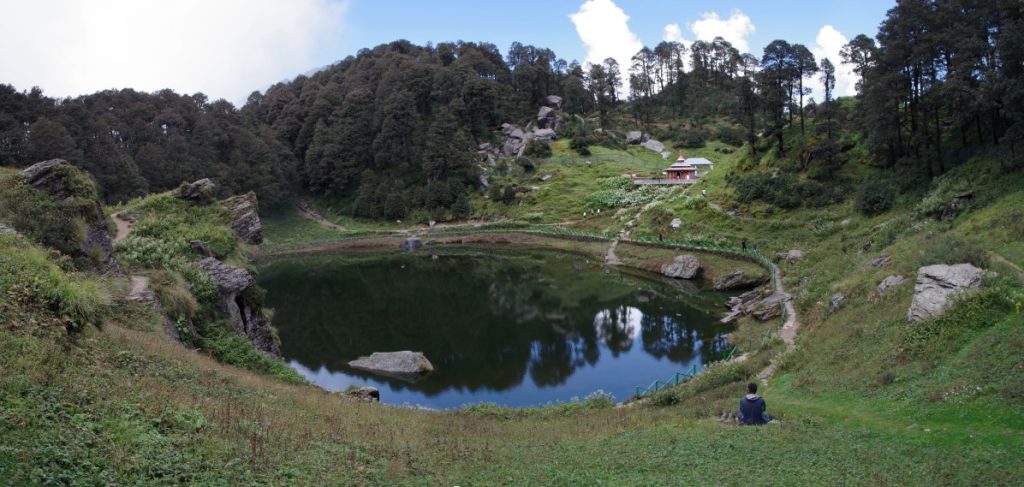
Why Jibhi Is a Hidden Gem Jibhi is a peaceful, worth-visiting village ideal for leisurely travel. It is nestled in the Tirthan Valley of Himachal. Jibhi provides immense peace, unexplored paths, and genuine mountain life in contrast to Manali or Shimla. A well-planned Jibhi itinerary aids in striking a balance between leisure, adventure, and sightseeing. Whether you are looking for a 3-day short escape, 4-day balanced holiday, or 5-day immersive trip, Jibhi has something to offer to everyone be it families, couples or backpackers. Unique Highlight: Because of Jibhi’s verdant meadows and wooden homes, it is referred to as the “mini New Zealand of India.” Pro Tip: To avoid high tourist rush and to take advantage of stunning homestay options, schedule your trip to Jibhi advance especially during the week. What’s in this Blog? Why Jibhi Is a Hidden Gem How to Reach Jibhi Best Time to Visit Jibhi Jibhi Itinerary – 3 Days Jibhi Itinerary – 4 Days Jibhi Itinerary – 5 Days Where to Stay in Jibhi Things to Do in Jibhi & Nearby Local Festivals and Food Pro Travel Tips for Jibhi FAQs Final Thoughts How to Reach Jibhi By Road: It takes 12 to 14 hours to drive 500 km via the Aut tunnel from Delhi to Jibhi. By Train: Chandigarh is the closest station; from there, take a bus or taxi. By Bus: Direct overnight Volvo buses run till Aut, followed by a 1.5-hour local cab. By Air: Take a plane to 60-kilometer-distance Kullu-Manali Airport (Bhuntar). Pro Tip: Motion Sickness is common as mountain curves can be quite steep. So, always carry motion sickness medication when driving. Best Time to Visit Jibhi Spring (March–May): If you love nature & greenery, it’s the perfect time, as there are blossoms and greenery all around. Perfect for trekking too. Summer (June–August): In the month of June to August, there’s the essence of cool climate, refreshing waterfalls to relax, and offbeat escapes. Autumn (September–November): Great time to experience the beauty of golden landscapes, clear skies, and festivals. Winter (December–February): In this snowy paradise, cozy getaways and romantic getaways are ideal for exploring. Pro Tip: Avoid the time of July–August especially if you’re traveling with kids or elderly. Because there’s a high chance of monsoon landslides. Jibhi Itinerary – 3 Days (Short Getaway Plan) Day 1: Stay at riverside homestay for experiencing real sight-seeing beauty and unwind with a bonfire in the evening. Day 2: Explore Chehni Kothi and visit the beautiful Jibhi Waterfall, and have a local Himachali lunch. Day 3: Before departing, don’t forget to visit serene Serolsar Lake and Jalori Pass. For Couples: Arrange a stargazing stroll. Spend your evenings at the riverbank cafés. For Families: Stay away from rough & lengthy hikes especially if you’ve come with children or elders. Better to opt for shorter treks like Jibhi Waterfall. For Backpackers: Stay in hostels to network with other fellow tourists. It’s a better opportunity to exchange trekking advice. Pro Tip: In Jibhi, get up early as days are shorter. Because the sun sets quickly in the valley, so plan your itinerary accordingly. Jibhi Itinerary – 4 Days (Balanced Trip Plan) Day 1: Arrival, riverside walk, and local café visit. Day 2: Day trip to Tirthan Valley, trout fishing, and village exploration. Day 3: Serolsar Lake picnic and hike up Jalori Pass. Day 4: Explore the temples and Banjar village while shopping for handicrafts. For Couples: Go to Shoja for a day trip to take pictures of the sunset. For Families: Incorporate Banjar village to experience local cuisine and culture. For Backpackers: Extend to Tirthan Valley. A must try meal is trout fishing. Pro Tip: Better to rent a comfortable scooter locally for the mobility between villages. Jibhi Itinerary – 5 Days (In-Depth Experience) Day 1: Check-in to your home-stay. Have a delicious & authentic local Himachali thali dinner to start with a local vibe. Day 2: Trek to a waterfall and explore towards the Tirthan Valley. Day 3: A full-day hike up Jalori Pass and lakeside relaxation. Day 4: Must visit Shoja, take walks for photography, and discover hidden meadows. Day 5: For Cultural immersion better to have cooking sessions with locals. For Couples: For better privacy and bonfires experience, it is ideal to go for wooden cottages. For Families: Dedicate a day for Himachali meals and local cooking classes. For Backpackers: Add the Great Himalayan National Park on your list of places to visit. Pro Tip: To visit Great Himalayan National Park, you need to add an extra night in your trip. Where to Stay in Jibhi Homestays: Suitable for genuine Himachali hospitality. Cottages: Comfortable wooden accommodations with views of pine forests. Budget Hostels: Excellent for lone travelers and backpackers. Luxury Resorts: Perfect for couples looking for comfort and privacy. Pro Tip: Make your reservations for homestays in advance. Especially during summer and New year, it’s a smart move to book in prior. Jibhi has a lot of different lodging choices, from riverside hostels to comfortable wooden cottages. Your choice must be based on what traveller you are, whether you are backpacker, traveling with family, or traveling as a couple. For Couples : Romantic Cottages: There is the availability of private wooden cottages with fireplaces and mountain-view cottages for couples. Boutique Stays: Riverside cabins provide seclusion and candlelight dinners. Luxury Resorts: Luxury resorts are ideal for a couple’s honeymoon or anniversary trips. Pro Tip: Ask for cottages with valley-viewing balconies for an unforgettable sunrise experience. For Families : Family-Friendly Homestays: Homestays having big spacious rooms with home-cooked meals and warm hospitality. Cottages with Kitchenettes: It is perfect if you extended your stays with children; Local Villager Homes: Excellent for cross-cultural interactions. It provides a safer environment to families. Pro Tip: For the availability of nearby markets and medical facilities, it is better to choose stays near Banjar or Shoja. For Backpackers: Budget Hostels: You can meet fellow travelers in the common areas and dorms. Eco-Stays: Reasonably priced mud homes or wooden huts close to



